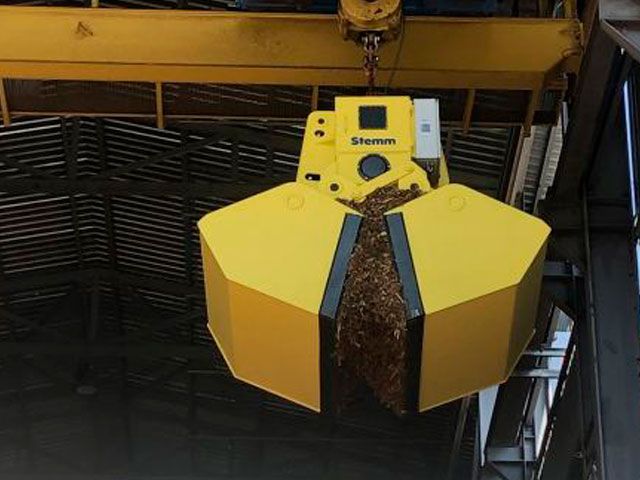Clamshell Grabs in Biomass Treatment
The commitment to using renewable energies has steadily increased for years due to their environmental benefits. Alongside well-known sources like wind or solar power, we add biomass-generated energy. Biomass encompasses everything from waste from forestry, agricultural, and livestock activities to domestic and industrial waste, as well as wood, one of the most common materials in biomass treatment. It's a broad concept that requires understanding different handling methods.
Treating different types of biomass depends significantly on their form and intended use. Hence, before selecting the appropriate clamshell grab model, it's essential to have a clear understanding of the types based on their origin and composition:
- Plant-based biomass: for example, wood from forests or sawmills; agricultural residues like straw or corn stalks; energy crops like switchgrass; forest residues like leaves or tree cutting remnants; or algae, as some species can use for biofuel production.
- Animal-based biomass: livestock manure and animal fats and oils.
- Organic-based biomass: including food waste and municipal solid waste (MSW).
- Pruning and gardening waste.
- Residual biomass: essentially any biomass generated as a byproduct of another activity, like surplus from electricity generation using residual wood.
The collection and handling of these different types of biomass are also influenced by the characteristics of the collection site, a variable that's also considered when selecting the type of clamshell grab.
Electrohydraulic clamshell grabs or electro-hydraulic orange peel grabs
Within Stemm's solutions, the two suitable options for biomass are the electrohydraulic clamshell grabs in models 2CH-0.6, 2CH-1.1, 4CH-0.6, and 4CH-1.1, considering the material density for manipulation. Additionally, the electrohydraulic orange peel grabs, PH-0.9, are viable for biomass treatment.
The electro-hydraulic clamshell grabs with specially designed valve profiles for each particle size, slope and density are equipped with HARDOX 500 special wear-resistant manganese steel closing lips. Its interchangeable valves with safety stops ensure maximum penetration and compaction force, enabling complete fills. Its load safety feature allows it to work on any slope with low noise levels. Stemm's electrohydraulic clamshell grab and its interoperable system, composed of separate units, allow numerous combinations to find the best technical and economical solution.
The electro-hydraulic grab, featuring claw profiles and semi-shells suitable for each product, is also a solution for biomass treatment, especially for lighter materials or confined spaces. Despite its maximum penetration force, it guarantees load safety, works on any slope, and maintains low noise levels. Its stops are at most 15 minutes, and its blocks are interchangeable for all Stemm machines.
Both equipment types have their own advantages and characteristics, so the appropriate choice depends on the specific circumstances of the operation and the project's needs regarding collection and environment.
Stemm's Experience in Biomass Handling
Stemm boasts years of experience in designing and manufacturing grabs. Each undergoes rigorous quality control and specialized support to offer the right solution for each case. Stemm's clamshell grabs for biomass handling are already installed in international facilities such as the Alquería (Alicante) paper mill or the Muttenz Basel Auhafen (Switzerland) port terminal.
With Stemm, you can receive a special online budget to evaluate and calculate the project budget conveniently and effectively.






